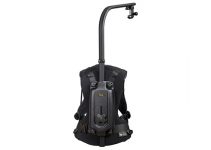Color grading is no longer just for editors and colorists. Many filmmakers are getting into the editing game and, in my opinion, it helps so much as a filmmaker to be knowledgeable about every step in the process. By understanding different aspects of production filmmakers can more easily direct other processes to streamline the entire project.
Alex Jordan, the founder of Learn Color Grading, is here to show everyone seven essential styles he thinks all filmmakers should learn. Considering the extreme wealth of knowledge Jordan shares on his channel, this is well worth a watch.
1. Low Key Blue
Number one is the quite easy low key blue. Reduce the saturation a little, bring the game down to darken the image, and then adjust the color to blue using offset. Almost looks a little like doing day-for-night.
2. High Key Saturated
For a bright, colorful image you will want to go for the high-key look. Unfortunately, it doesn’t mean just increasing saturation and gamma with a little extra contrast. You’ll want a little more control over how the image becomes saturated. To do this Jordan uses the Luma Vs Saturation curve.
He brings up the curve in the middle and then moves it to the left or right until the image is properly saturation. Next, using the Hue Vs Saturation curve you can control the saturation of each colors. This will help make sure you don’t get one color dominating all others.
3. Muted Yellow
Another popular look is muted yellow. Using the Primaries Bars you reduce the saturation and then bring down the blue channel in gain, gamma, and lift.
Blue and yellow are opposites in the color grading world, so by reducing blue you bring out the yellow without over saturating your colors. You can even finish it off by reducing the contrast slightly.
4. Bleach Bypass
Based off a traditional film processing technique that would result in an image with more visible grain and increased contrast. Starting off with a new serial node and then a layer node. In this layer, Jordan brings the saturation all the way down.
Then you just head over to the merge node at the end and change the composite mode to overlay. Super easy and a great look. You can even go back into your first node and apply standard color grading techniques, adding a color, bringing back highlights, etc.
5. Cross-Processing
This look isn’t one specific thing since original cross processing was caused by processing film in a different type of chemistry. It’s more of a general idea of how to make images look since there are a ton of options here but it is easy.
The trick is the custom curve tools. Unlink the colors so you can control the color channels separately. In this example, Jordan takes the red curve and brings the highlights up while dragging the shadows down. Then you take the blue curve and do the exact opposite, bringing the highlights down and shadows up.
6. Hot Day
Jordan’s method starts with increased contrast and then changing the temperature and tint in the secondary controls until you get a yellow look that “resembles a very hot day.” Next up is a reduction of the saturation and then adjusting the pivot to get it looking good based on personal preference.
7. Brown
A reminder of coffee, the brown look is a more unique option. Using the Color Boost in the secondary controls you want to bring the saturation down a lot. Following that you’ll use the gamma controls to add a bit of red and then you can adjust the game down to tons of contrast.
Repeat with the gain to a lesser extent. Finally, bring the color boost down, but enough that the color still just remains. You should see it come into effect.
These are good practice grades, and by just learning these techniques can give you a great jumping-off point for your own projects. Do you have any of your own favorite grades?
[source: Learn Color Grading]
Order Links:
Disclaimer: As an Amazon Associate partner and participant in B&H and Adorama Affiliate programmes, we earn a small comission from each purchase made through the affiliate links listed above at no additional cost to you.



